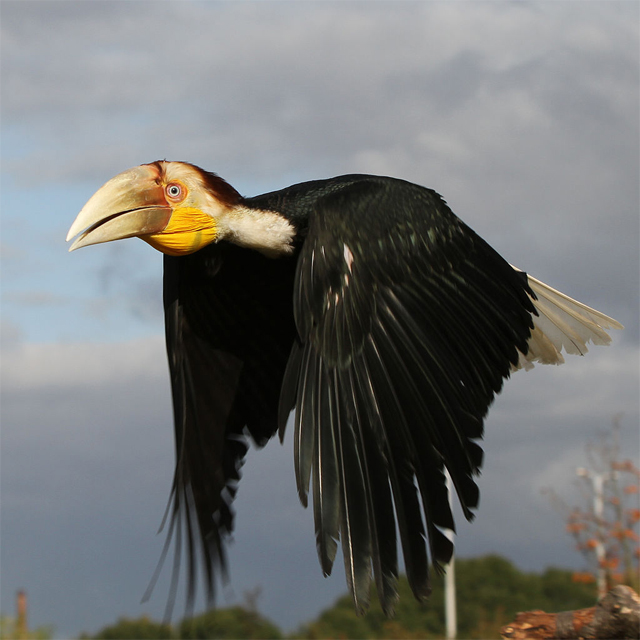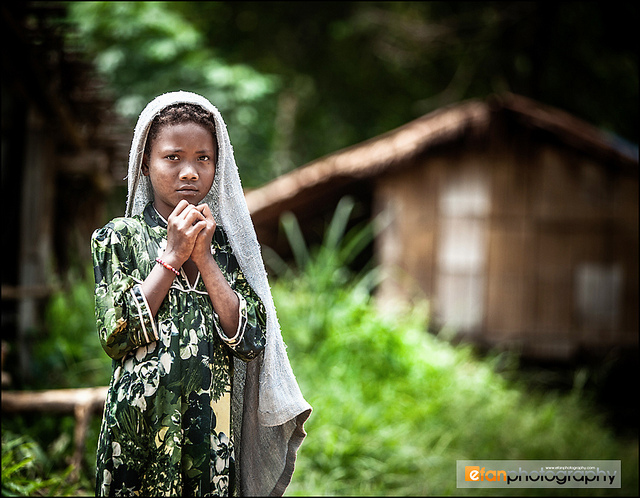A fairly young Batek widow has found comfort from the loss of her husband by caring for a huge tropical forest bird, a wreathed hornbill. Several Malaysian newspapers, including the New Straits Times and The Star, published articles about the human/avian friendship last week.

The 37-year-old Batek woman, named Umi, lost her husband a year ago due to a high fever but three months ago her cousin was out hunting in the forest when he encountered a young hornbill. It had probably fallen out of its nest according to the news stories, though since the female birds are known to seal their nesting cavities from the inside, except for feeding holes, before they lay their eggs, it is not clear how the baby could have fallen out of its nest. Whatever, the cousin brought it back for Umi to care for. She quickly found solace from her troubles in caring for the baby bird and named it To’ek. To judge by the photos that accompany the New Straits Times article, To’ek is a young male.
She treats the young hornbill like an adopted child. “To’ek is my companion,” Umi tells one of the reporters. “I got it when it was still small and had no feathers… I took care of it. What I eat, To’ek eats.” The wreathed hornbill is a tropical bird that lives in forests from the northeast corner of India east and southeast through Southeast Asia as far as part of Indonesia. It can soar as high as 1830 meters though it can be difficult to locate. It is a protected species by the Malaysian Wildlife and National Parks Department. It is found in the Taman Negara National Park, near Umi’s home.

The Batek woman understands that her To’ek is a bird of the forest, to which it will return. She leaves it free to fly off whenever it wants to go, but when the bird is hungry it returns to her for food handouts. “If I don’t feed it, To’ek might be hungry,” she adds. Referring to the bird as her “loyal companion,” she says that To’ek makes a begging sound when it wants to be fed, so she feeds it bananas and rice.
“Let it return to the forest when it’s fully grown, that’s its home. I’m taking care of it now as it is still young,” Umi concludes to one of the newspapers.
In her wonderful book Changing Pathways (2004), Lye Tuck-Po writes that the dense forest vegetation in which the Batek live prompts them to listen carefully for the sounds that birds and animals make. The people rely on those noises for information about forest conditions, much more than they do on the sense of sight. Hence, birds are very important to the Batek, particularly the ones that are noisy. The people rely on communications from birds to mark the onset or the passing of forest seasons or events. For instance, Lye writes (page 152) that the appearance of one species of bird is associated with the onset of a thunderstorm.
But more to the point of last week’s news reports, while Lye does not have the data to make firm conclusions, she nonetheless suspects that the Batek name the birds of their forests onomatopoeically for the sounds they make. It is reasonable to suppose that Umi listened to her baby hornbill and heard it say something close to “to’ek.”